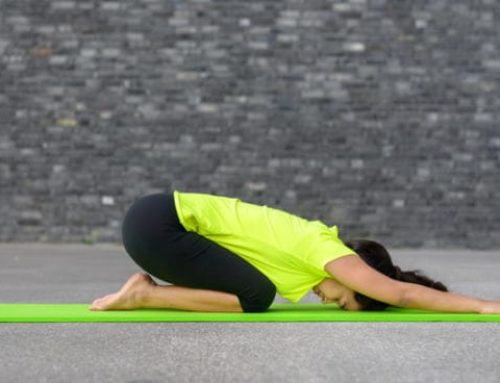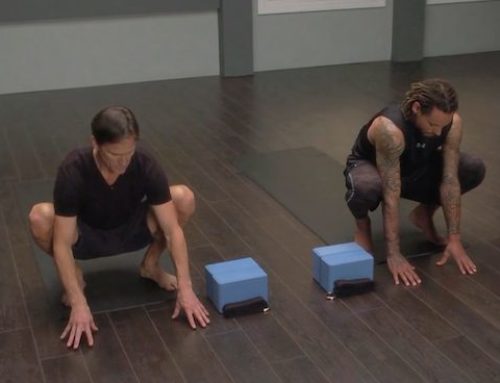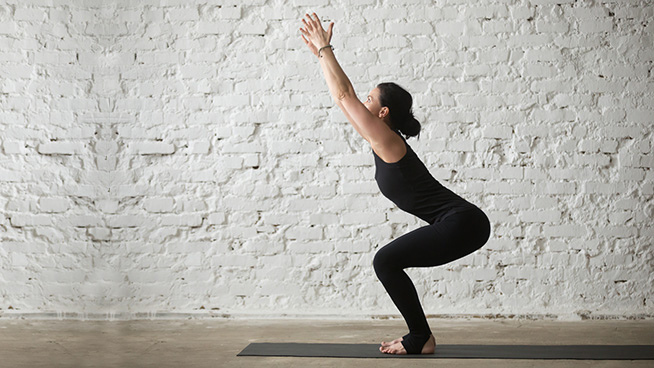3 Strategies to Reduce Stress and Increase Athletic Performance
Sometimes the most difficult opponent you face as an athlete is stress, hindering your ability to perform your best when it matters most. Your focus shifts from the beneficial read-and-react mode to the less beneficial think-and-tense mode.
Stress can be experienced cognitively, emotionally, physically—or as a combination of the three. When you are stressed, your brain can run hot, causing you to have difficultly regulating emotions, focusing and thinking clearly. Your body releases hormones that produce a variety of physical responses, including muscle tension, sweating and increased heart rate.
The good news: there are simple strategies that prepared athletes can use to reduce stress in only a few minutes a day.
1. Mindfulness Training
Mindfulness training is the practice of moment-to-moment awareness. Athletes susceptible to anxiety, counterproductive thoughts and emotional overreactions can benefit by emphasizing being in the present. Recent research has shown that mindfulness training actually changes the structure of the brain, much like exercise changes the body. People who practice it regularly show increases in their processing speed, cognitive flexibility, focus and working memory. They also display reductions in their emotional responses, rumination, stress and thoughts unrelated to the task at hand.
RELATED: Why Pro Athletes are Trying “Mindfulness Training”
The Mindfulness-Based Stress Reduction program is a good place to start.
- Find a quiet location removed from distractions.
- Sit upright in a chair in a relaxed posture.
- Close your eyes and release any tension in the muscles of your body. Be sure to include the muscles of your face, jaw and neck.
- Notice your breath moving in and out of your body. Most beginners gravitate toward the nostrils, but the diaphragm is also a good choice.
- Without trying to change or do anything to your breath, just be aware of the rhythm of your breathing. It may help to say to yourself “in-out” with each breath.
- When you notice your mind wandering, return to the waves of your breathing.
Begin with five minutes a day and gradually increase the time as you feel more comfortable. As you progress, try to increase to 10 minutes. It may be helpful to set a timer.
2. Progressive Muscle Relaxation
Tense muscles, particularly in your upper body, neck and face, are a clear indication of stress. They can slow you down and lead to injury. Progressive Muscle Relaxation can improve your ability to relax on demand. Studies have shown this technique reduces oxygen metabolism, respiration rate, blood pressure, muscle tension and negative thoughts.
- Sit in a straight back chair.
- Take a moment to release any tension in your body.
- Lift your feet off the floor and tighten and flex the muscles in your feet and calves as hard as possible for 10 seconds.
- Slowly lower your feet back to the floor, allowing your feet and calves to settle into a relaxed state as they reach the floor.
- Take a deep breath, then extend your legs in front of you with your feet flexed. Tense and tighten. Hold for five seconds.
- Slowly lower your legs to the floor, allowing them to become soft and relaxed.
- Progress through the rest of your major muscles, working your way to your head.
RELATED: 4 Sports Massage Techniques to Relieve Tight Muscles
3. Yoga
Yoga targets the cognitive, emotional and physical components of stress. Benefits of yoga include reduced stress response and anxiety, increased focus and clear thinking. Yoga teaches athletes to match breath with movement as they move through periods of tension and relaxation. It’s a skill that’s surprisingly difficult for most, but with practice it can improve both physical awareness and emotional regulation. When you develop the ability to control your breath in difficult poses and sequences, you learn how best to work with your body under stress. This makes it easier to come through in the clutch during big games.
To begin, do a 10-minute continuous sun salutation routine, focusing on matching your breath to the movement.
RELATED: YOGA FAILS, FIXED: How to Not Mess Up Downward Facing Dog
[cf]skyword_tracking_tag[/cf]RECOMMENDED FOR YOU
3 Strategies to Reduce Stress and Increase Athletic Performance
Sometimes the most difficult opponent you face as an athlete is stress, hindering your ability to perform your best when it matters most. Your focus shifts from the beneficial read-and-react mode to the less beneficial think-and-tense mode.
Stress can be experienced cognitively, emotionally, physically—or as a combination of the three. When you are stressed, your brain can run hot, causing you to have difficultly regulating emotions, focusing and thinking clearly. Your body releases hormones that produce a variety of physical responses, including muscle tension, sweating and increased heart rate.
The good news: there are simple strategies that prepared athletes can use to reduce stress in only a few minutes a day.
1. Mindfulness Training
Mindfulness training is the practice of moment-to-moment awareness. Athletes susceptible to anxiety, counterproductive thoughts and emotional overreactions can benefit by emphasizing being in the present. Recent research has shown that mindfulness training actually changes the structure of the brain, much like exercise changes the body. People who practice it regularly show increases in their processing speed, cognitive flexibility, focus and working memory. They also display reductions in their emotional responses, rumination, stress and thoughts unrelated to the task at hand.
RELATED: Why Pro Athletes are Trying “Mindfulness Training”
The Mindfulness-Based Stress Reduction program is a good place to start.
- Find a quiet location removed from distractions.
- Sit upright in a chair in a relaxed posture.
- Close your eyes and release any tension in the muscles of your body. Be sure to include the muscles of your face, jaw and neck.
- Notice your breath moving in and out of your body. Most beginners gravitate toward the nostrils, but the diaphragm is also a good choice.
- Without trying to change or do anything to your breath, just be aware of the rhythm of your breathing. It may help to say to yourself “in-out” with each breath.
- When you notice your mind wandering, return to the waves of your breathing.
Begin with five minutes a day and gradually increase the time as you feel more comfortable. As you progress, try to increase to 10 minutes. It may be helpful to set a timer.
2. Progressive Muscle Relaxation
Tense muscles, particularly in your upper body, neck and face, are a clear indication of stress. They can slow you down and lead to injury. Progressive Muscle Relaxation can improve your ability to relax on demand. Studies have shown this technique reduces oxygen metabolism, respiration rate, blood pressure, muscle tension and negative thoughts.
- Sit in a straight back chair.
- Take a moment to release any tension in your body.
- Lift your feet off the floor and tighten and flex the muscles in your feet and calves as hard as possible for 10 seconds.
- Slowly lower your feet back to the floor, allowing your feet and calves to settle into a relaxed state as they reach the floor.
- Take a deep breath, then extend your legs in front of you with your feet flexed. Tense and tighten. Hold for five seconds.
- Slowly lower your legs to the floor, allowing them to become soft and relaxed.
- Progress through the rest of your major muscles, working your way to your head.
RELATED: 4 Sports Massage Techniques to Relieve Tight Muscles
3. Yoga
Yoga targets the cognitive, emotional and physical components of stress. Benefits of yoga include reduced stress response and anxiety, increased focus and clear thinking. Yoga teaches athletes to match breath with movement as they move through periods of tension and relaxation. It’s a skill that’s surprisingly difficult for most, but with practice it can improve both physical awareness and emotional regulation. When you develop the ability to control your breath in difficult poses and sequences, you learn how best to work with your body under stress. This makes it easier to come through in the clutch during big games.
To begin, do a 10-minute continuous sun salutation routine, focusing on matching your breath to the movement.
RELATED: YOGA FAILS, FIXED: How to Not Mess Up Downward Facing Dog
[cf]skyword_tracking_tag[/cf]









